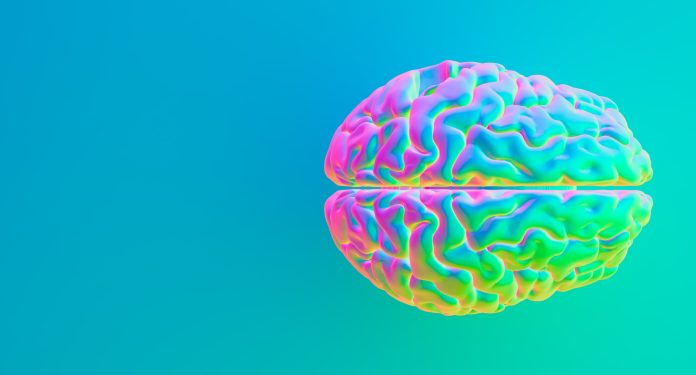Despite migraine affecting a large proportion of the population, many people are reluctant to seek help for this often debilitating condition. To understand why and the challenges with diagnosis and treatment, Lorna Rothery spoke to esteemed assistant professor and headache specialist Dana Ionel
What are some common triggers and risk factors for migraine?
Many different factors can trigger migraine, such as weather changes, dehydration, lack of sleep, stress, and, for many females, getting their period. It’s important to note that migraine is not solely linked to hormones, despite common belief.
There’s a lot of misconception about food being a common migraine trigger. People often believe that foods like cheese or chocolate can cause migraine, but there isn’t enough evidence to support this. Red wine can be a common trigger for some people, but in terms of other foods, what we’ve learned over time is that the things we thought were food triggers are actually just normal food cravings associated with migraine.
Most of the time, migraine triggers are things that we can’t always avoid, such as weather changes or imperfect sleep due to various obligations or stress. It’s important to use the term ‘trigger’ rather than ‘cause’ because environmental factors tend to be the most common triggers.
Migraine is a complex neurological disease with a strong genetic basis. While it may not affect everyone in a family, identifying multiple genes that cause migraine suggests a genetic predisposition. Risk factors for developing migraine include having other family members with migraine. However, there’s really nothing that someone can do to cause migraine; people are susceptible, and then there might be things that trigger it. A person who doesn’t have that genetic risk can’t just give themselves a migraine. So, there’s really nothing other than genetics that is a risk factor for it, but there are lots of triggers, unfortunately.
What are some key challenges in terms of migraine diagnosis and management?
The problem with diagnosing migraine is that there is a set criteria for it. Migraine symptoms can vary widely from person to person, so not everyone will experience the same symptoms. Some may get nauseous, while others may become sensitive to light and sound. The intensity of pain also varies, with some experiencing severe pain while others may have milder symptoms that still meet the criteria for migraine.
This spectrum of symptoms and pain levels makes it difficult to diagnose migraine accurately. Many people may downplay their symptoms due to stigma or because they believe that what they are experiencing is just a bad headache. The stigma surrounding migraine often makes people feel embarrassed to seek care, leading them to believe that their condition is not serious enough to warrant attention. This stigma is observed even in school children as migraine can begin in childhood and continue to impact individuals throughout their lives if they do not get the right care.
It’s important to note that migraine is a significant health concern, as evidenced by the Global Burden of Disease study, which highlighted migraine as the second leading cause of years lived with disability worldwide in 2019 across all ages and genders. Despite this, stigma and misconceptions persist, which can prevent people from seeking the care they need.
What treatment is available to people, and what are the key challenges regarding medical guidance for prescribing opioids for migraine?
Many people try to manage migraine on their own by drinking more water, taking naps, and using over-the-counter medicines, which can be effective for some. Additionally, some have learned relaxation and deep breathing techniques to help manage symptoms. However, these methods may not be sufficient for those experiencing frequent attacks or severe symptoms that impact daily life.
It’s important to recognize that there is no one-size-fits-all treatment for migraine. The choice of medication prescribed by a healthcare provider depends on the frequency and severity of the headaches. For individuals experiencing two to six attacks per month, or more, a doctor may recommend a daily preventive medication. For less frequent or less severe migraine, an as-needed prescription medication, such as triptans, gepants, or ditans, may be suggested. It’s worth noting that opioids are not typically recommended for treating migraine due to the risk of medication overuse headaches (rebound headaches) and the potential for addiction. Furthermore, opioids are one of the most common causes of medication overuse headaches and are challenging to treat.
While some individuals with severe migraine may end up receiving opioid prescriptions due to limited access to alternative treatments, it’s important to understand the associated risks and limitations of opioids for migraine management. The goal is to reduce the reliance on opioids for migraine treatment. Access to alternative medicines and education on the potential adverse outcomes of using opioids for migraine remain crucial for improving patient care in these situations.
How could healthcare policy and medical practice evolve to better support those with migraine?
There are various advocacy groups and organizations, such as the Global Patient Advocacy Coalition (G PAC), the International Headache Society, and the American Migraine Foundation, that are working globally and locally to raise awareness about migraine. These groups use social media to provide information about migraine and assist individuals in finding suitable medical assistance.
Efforts are also being made to change how insurance companies approve or deny medications for migraine. Lobbying is underway for the Safe Step Act, which aims to allow exceptions in cases where older medications with more side effects have failed before new and more expensive medications are approved. This would provide more flexibility in the approval process.
Moreover, there is a growing push for increased funding for migraine research. This is aimed at further understanding the causes of migraine and developing more effective treatments, as current options like paracetamol and opioids are not as effective.
In addition, there are efforts at the state level in the United States to improve access to detoxification programs and opioid use disorder clinics. These programs offer essential medical support and access to treatment options for individuals struggling with opioid addiction.
Migraine is significantly underfunded in terms of research grants, particularly considering the high number of people affected and the level of disability it causes. There has been a major effort to address this issue. Additionally, there is a need for more diverse representation in migraine research, as the majority of sufferers are women, and the condition often begins in childhood, making clinical trials challenging. Efforts are underway to increase diversity in research and secure more funding for a condition that results in an estimated annual loss of $78bn in the United States due to decreased productivity, whether through absenteeism or reduced work performance.











